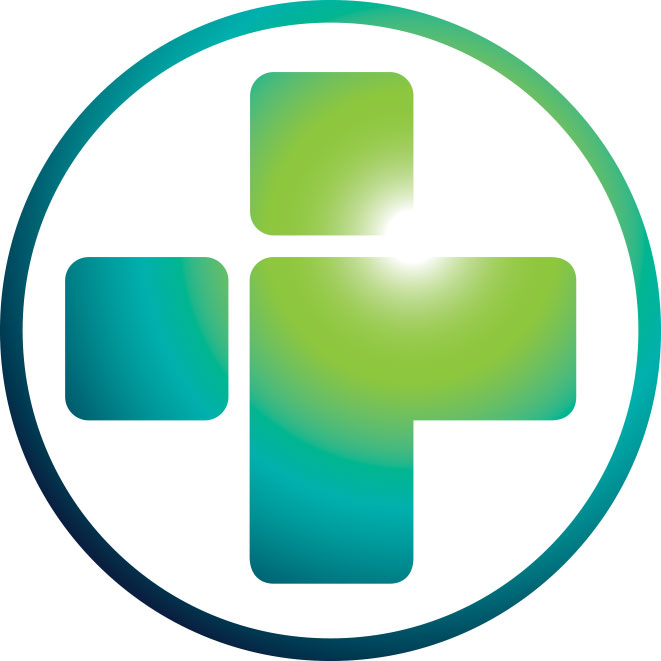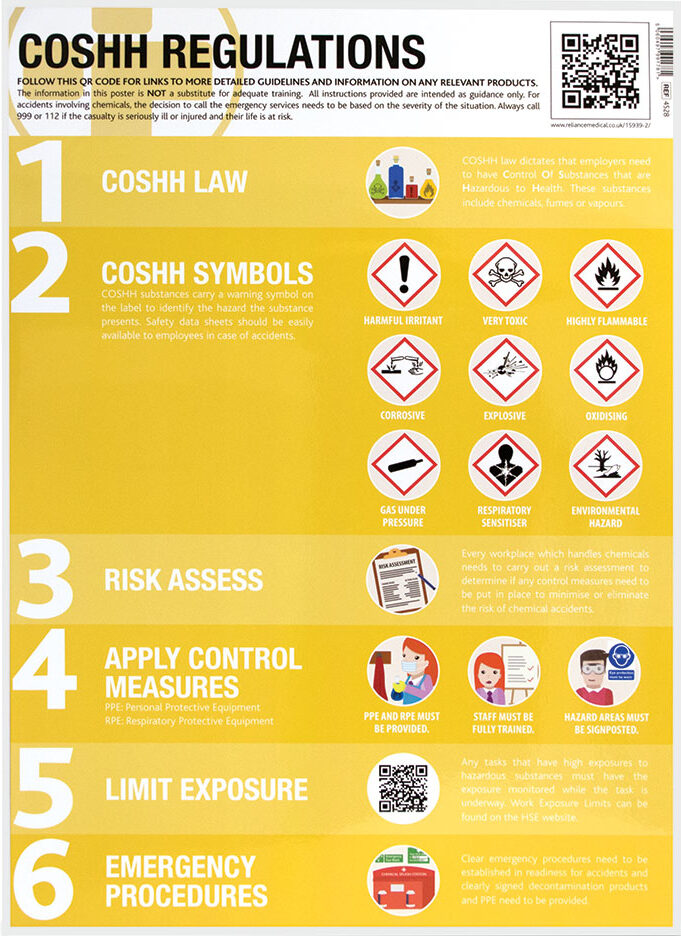COSHH Regulations
Additional material to support your workplace poster, with a quiz to test your knowledge.
WHAT IS THE CONTROL OF SUBSTANCES HAZARDOUS TO HEALTH (COSHH)?
COSHH is the law that requires employers to control substances that are hazardous to health. Most businesses use substances or products that are mixtures of substances. Some of these processes create substances which could cause harm to employees, contractors, and other people. COSHH covers substances that are hazardous to health. Substances can take many forms and include (but are not limited to), chemicals, fumes, dust, vapours, and biological agents (germs). If the packaging displays hazard symbols, then the contents are classed as a hazardous substance.
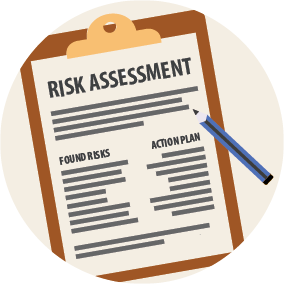
RISK ASSESS
Every workplace which handles chemicals needs to carry out a risk assessment to determine if any control measures need to be put in place to minimise or eliminate the risk of chemical accidents. Risk assessments are about taking sensible steps to prevent ill health. You need to know how workers are exposed, and to how much, before you can decide if you need to do anything to reduce their exposure. The COSHH Regulations require employers to assess the risk to their employees and to prevent or adequately control those risks.
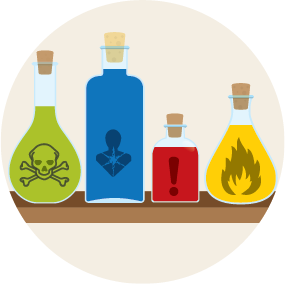
LOOK AT EACH SUBSTANCE
Which substances are involved? In what way are they harmful? You can find out by:
Checking information that came with the product, e.g. a safety data sheet.
Asking the supplier, sales representative, and your trade association.
Looking in the trade press for health and safety information.
Checking on the Internet, e.g. HSE’s website pages for your trade.
Can exposure to a hazardous substance be prevented by substituting it with an alternative which presents less hazard to health? Think about what could happen if you use the alternatives and implement the substitute if possible.
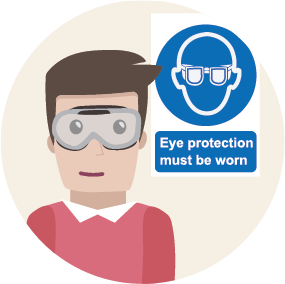
THINK ABOUT THE TASK
If the substance is harmful, how might workers be exposed? This could be by:
BREATHING IN GASES, FUMES, MIST, OR DUST.
Once breathed in, some substances can attack the nose, throat, or lungs, while others get into the body through the lungs and harm other parts of the body, e.g. the liver.
CONTACT WITH THE SKIN.
Some substances damage skin, while others pass through it and damage other parts of the body. Skin can get contaminated by direct contact, splashing, or by contact with contaminated surfaces.
SWALLOWING.
Without washing first, people can transfer chemicals from their hands to their mouths by eating, smoking etc.
CONTACT WITH THE EYES.
Some vapours, gases, and dust are irritating to eyes. Splashes of caustic fluid can damage eyesight permanently.
Bear these different kinds of contamination in mind when you look at the tasks.
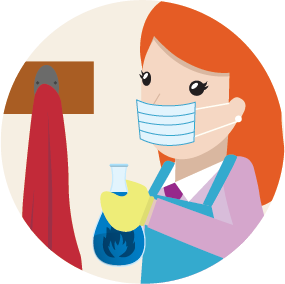
APPLY CONTROL MEASURES
Control measures need to be implemented to reduce the risks associated with working with COSHH substances. Control measures usually involve a mixture of equipment and ways of working to reduce exposure.
You can do this by:
Using control equipment, e.g. general ventilation, extraction systems, total enclosure, or partial enclosure.
Controlling procedures, e.g. ways of working, supervision and training to reduce exposure, maintenance, examination and testing of control measures.
Worker behaviour, making sure employees follow the control measures, e.g. training to ensure they wear Personal Protective Equipment (PPE) and Respiratory Protective Equipment (RPE), use control equipment, and follow hygiene procedures.
Changing how often, or when a task is undertaken, or reducing the number of employees nearby, can effect an improvement to exposure control.
In readiness for potential accidents, clear emergency procedures need to be established and visibly signed decontamination products provided.
There is no set way to implement control measures; they need to be based on the outcome of each workplace’s individual risk assessment and designed around the individual tasks and ways of working.
COSHH SYMBOLS AND THEIR MEANINGS
Products you use may be ‘dangerous for supply’. If so, they will have a label that has one or more hazard symbols.
These products include common substances in everyday use such as paint, bleach, solvent, or fillers. By law, when a product is ‘dangerous for supply’, the supplier must provide you with a Safety Data Sheet.
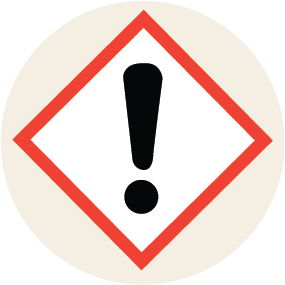
CAUTION:
HARMFUL OR IRRITANT
DEFINITION:
A substance that may cause inflammation and irritation when in contact with the skin. May also cause health risks if ingested, inhaled, or if penetration of the skin occurs.
HOW TO MINIMISE RISK:
• Avoid contact with the skin.
• Do not inhale.
• Wash thoroughly before you eat or drink after handling substance.
• Avoid any contact with eyes. If this occurs, wash thoroughly with water and seek immediate medical advice.
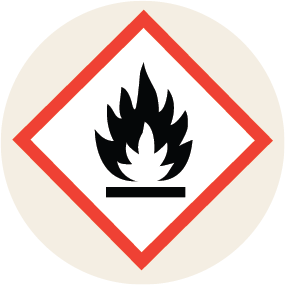
CAUTION:
FLAMMABLE
DEFINITION:
Chemicals that may catch fire in contact with air and only need brief contact with an ignition source, or, a substance that has a very low flash point or evolves into highly flammable gases in contact with water.
HOW TO MINIMISE RISK:
• Make sure that the chemical is stored in a cool, well-ventilated place.
• Ensure they are stored with their lids tightly sealed. When using, do not breath in spray or vapour.
• Avoid contact with skin.
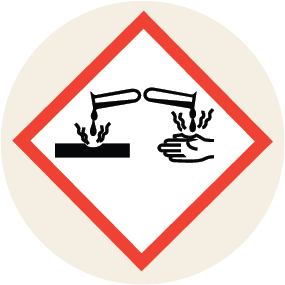
CAUTION:
CORROSIVE
DEFINITION:
A chemical substance that may destroy living tissue on contact.
HOW TO MINIMISE RISK:
• Always wear protective PPE clothing.
• Dispose of used contaminated clothing after use.
• Avoid contact with the skin. If this event occurs, rinse with plenty of water.
• Avoid contact with eyes. If this event occurs, rinse with plenty of water and seek immediate medical help.
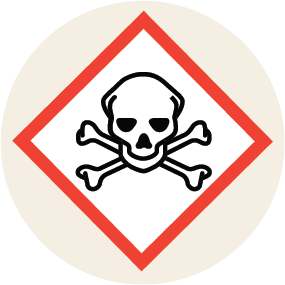
CAUTION:
TOXIC/VERY TOXIC
DEFINITION:
A substance that will cause severe health problems if ingested or inhaled. Potentially fatal.
HOW TO MINIMISE RISK:
• Always wear PPE when handling.
• If substance comes into contact with skin, wash thoroughly with plenty of water and seek immediate medical advice.
• If substance comes into contact with eyes, wash thoroughly with water and seek immediate medical advice.
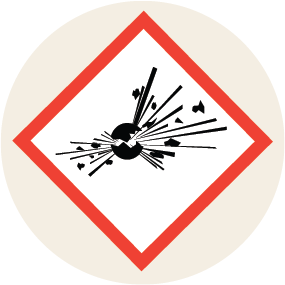
CAUTION:
EXPLOSIVE
DEFINITION:
A substance which may explode if it comes into contact with heat or flame.
HOW TO MINIMISE RISK:
• Before handling, ensure you have a full understanding of the instructions.
• Ensure that the contents are stored in a cool and well-ventilated place.
• Store away from any sources of ignition or heat.
• After use, ensure the contents are disposed of safely.
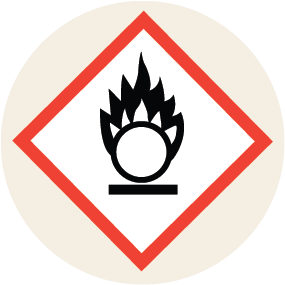
CAUTION:
OXIDISING
DEFINITION:
Chemicals and preparations that react exothermically with other chemicals and may intensify fires.
HOW TO MINIMISE RISK:
• Before handling, ensure you have a full understanding of the instructions.
• Make sure that the chemical is stored in a cool, well-ventilated place.
• Store away from any sources of ignition or heat.
• After use, ensure the contents are disposed of safely.
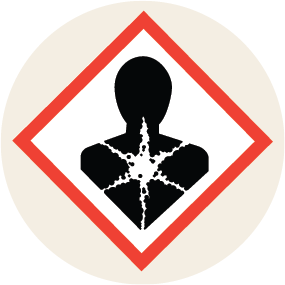
CAUTION:
RESPIRATORY SENSITISER
DEFINITION:
The substance is a respiratory sensitiser, and may cause allergy or asthma symptoms or breathing difficulties if inhaled.
HOW TO MINIMISE RISK:
• If substitution is not possible, minimise the exposure concentration, time, frequency, and number of workers exposed.
• Work in a well-ventilated area.
• Ensure substances are stored with their lids tightly sealed.
• After use, ensure the contents are disposed of safely.
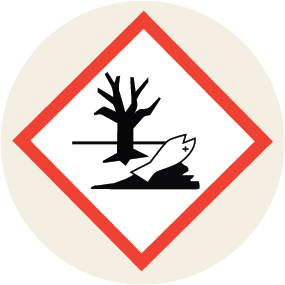
CAUTION:
HAZARDOUS TO THE ENVIRONMENT
DEFINITION:
A substance that may present a danger to one or more parts of the environment.
HOW TO MINIMISE RISK:
• When disposing of the substance, ensure that the chemical and the container are disposed of safely.
All information based on the Health and Safety Executive’s “Working with substances hazardous to health” and “Identifying hazards and assessing risks.”
COSHH Regulations Quiz
A short quiz to test your knowledge of COSHH Regulations.

All information is for guidance only and correct at time of publication.

